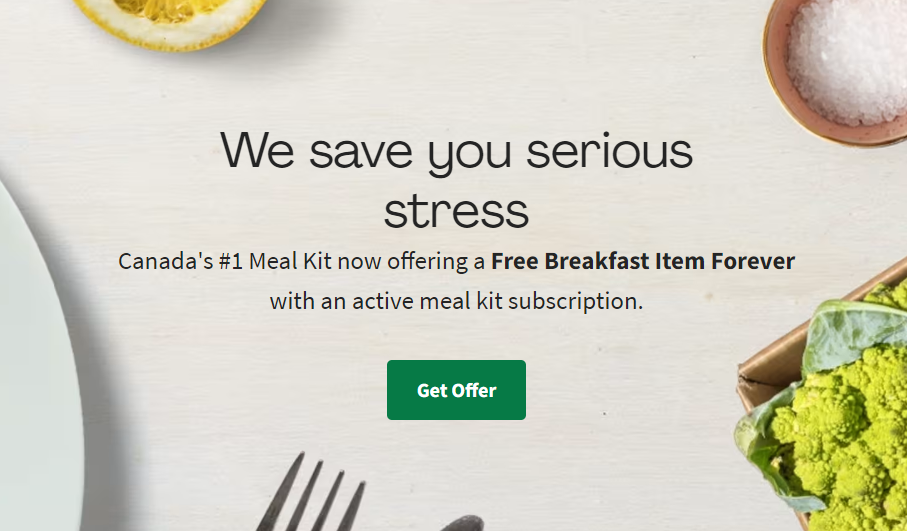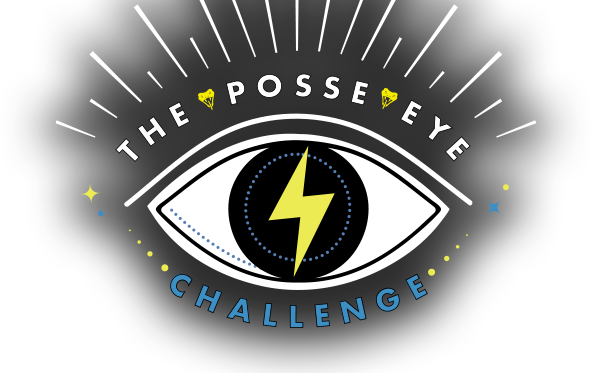Is your brand or business a trailblazer, champion, innovator, superhero or stage 5 clinger? Your answer to that question will reveal the RIGHT way to speak to your target audience. Keep reading…
What’s up guys!
Thanks for stopping by. If you’re not already part of the Copy Posse, get on it and hit subscribe to my YouTube Channel for a new tutorial on copywriting, marketing, and branding every single week!
This week, I’m talking about how to speak to your target audience! Now, when I say target audience, many of you may be thinking “Yeah, Alex, I know my target audience! I know their age, gender, geographical location, interests, level of education and even their biggest pain point!”
And all of that is great, and absolutely critical to nailing your copy. BUT… it’s not enough.
To effectively speak to your target audience you need to know their level of AWARENESS or understanding around the subject or product you’re selling….
Because this will determine the level of education and innovation you need to provide in order to make your offer stick.
A lack of awareness of market awareness is one of the biggest mistakes that a marketer or copywriter can make.
I’ll give you an example from my own file: Astrology Vs. Numerology.
Two similar topics, with two very different levels of market awareness.
Hundreds of millions of people around the world are familiar with what Astrology is. Do a quick keyword search on the term “Astrology” and you’ll get results that shoot through the roof – I mean everyone knows their Sign, right?! I’m a Leo! Where my fellow Leo’s at? What’s your Sign!? Comment below and let me know.
But what I’m getting at here is that Astrology has a very high level of market awareness. So, copywriting for an Astrology offer doesn’t require a lot of education to explain to the audience what it is and how it will benefit them. It does, on the other hand, require a more innovative and distinct Unique Selling Proposition.
Now let’s look at Numerology. Many may have heard of the term but do they really know what it is? Do you know your Life Path Number? Despite having been around almost as long as Astrology, it is nowhere near as popular. It gets one-quarter of the searches that astrology gets every single month.
So, because Numerology has a lower market awareness, when speaking to the target audience, there needs to be a greater level of education around the concept, features and benefits of the offer.
Knowing your level of market awareness also helps you gauge the market size, market share and precise market needs! By that I mean how many people currently purchase related products, how many competitors you have, and what opportunities are available for you to stand out!
Because here’s the thing, the greater the market awareness, the greater the market saturation or competition. When looking at these two factors together, you have something called Market Sophistication.
The term “Market Sophistication” was first developed by this guy, direct response marketing legend Eugene Schwartz in his 1966 book Breakthrough Advertising. This is one of the first 5 books I recommend you read if you want to be a copywriter! To find out the other 4, you can watch my video on that next!
So where does your offer stand on the Market Sophistication scale? One of the easiest ways to gauge this is to look at the number of similar products or services that have come before you. Or, in other words, how sophisticated is your target audience around what you’re selling? Have they seen it before?
Let’s explore the five stages of Market Sophistication now.
Stage 1: Hello, World!
At this stage, you’re among the first to bring a product or service like yours to the market. There is nothing but a blue ocean in front of you! You are a trailblazer! That means your audience doesn’t have many opportunities to compare your offer to others.
Products that enter at stage 1 have the best advantage at becoming the dominant player in the market. Think about it, no matter how hard Pepsi tries to be number one, Coca-Cola will always have a stronger, more nostalgic place in people’s minds for being the original cola drink.
A more recent example of a company that launched at Stage 1 is Hello Fresh. Today it’s the world leader in the meal-kit market, but when it launched in Berlin back in 2011, no one had heard of such a service! They send readily portioned and prepared ingredients, based on the recipes you pick, straight to your doorstep.

And people were like: “That’s a thing now? Sweet – I’ll give it a try!”
At stage 1, your offer is uncontested. Your USP is simply, “This has never been done before!”
Now, while it is easier to sell once you have the market’s attention, it does take some leg work to get there. When HelloFresh launched, their sales copy required market education to create awareness of what it is and how it works.
At this stage, you lead through education. You’re blazing new trails and hacking your way through the brush to clear the way for others to roll in after you.
Stage 2: What Makes You Better?
At this stage, the market is warmer. More businesses have popped up to compete for the same audience.
People have some idea of what your market is about and are aware that a solution like yours exists. But in order to stand out, you’ll need to promote your product’s specific features and benefits.
You need to champion what makes you better!
So this is where you can expand on your original claims with more proof and focus on your big promise. How is your product or service better, faster or easier than the other guys?
For example, when Apple launched its first Macintosh computer back in 1984, it focused on the ease and simplicity of its user interface compared to the standard command-line interface of its predecessors, making it the first commercially successful personal computer!
Here’s one of their ads showcasing that same positioning from the 2000s that was iconic (and kinda funny let’s be real).
At stage 2, your product descriptions will need to be longer than, “Hey, try this out!” but there is still a HUGE opportunity to gain mad market share. Just look at Apple.
Stage 3: How Are You Different?
By this point, your market has gotten a bit jaded by all the competition and saturated messaging in your niche. They know you’re all offering the same promise and tackling the same old problems. At this point, they need to be persuaded more on your methods and shown proven results (you now, testimonials, reviews, case studies, and so on).
This is the stage where most products that need to be restored, repeated, or replenished live – such as weight loss foods, skincare, toiletries, and household products.
At this stage, you need to innovate hard. You’ll need to show your audience how you do things differently by providing a unique mechanism or approach that makes you the unicorn of the market.
For example, Kayo, a boutique body care brand, took a different spin on body oils and lotions by positioning their products as anti-aging skincare. Their USP is “Face grade skincare for your body,” because why should you let the skin on your body age faster than your face? Brilliant.
Stage 4: Why Are You The Best?
At this stage, the market is getting noisier and noisier and it seems difficult to grow. Your audience is much more aware… And tired from all the ads being thrown in their face.
Here is where you identify what the top players in the field are missing and then fill that gap. Or in other words, come in strong where your competitors fall short. Be the super hero and swoop in to steal market share.
For example, when Memrise, the award-winning language-learning app, entered the market, they were up against big players like Duo Lingo and Babbel, each having their own loyal follower base and impressive user experience design.
To stand out, Memrise gamified language learning by implementing an evidence-based memory system that uses spaced repetition… And combined it with interactive videos and user-generated content to improve their learning experience.
They became known as the language app that makes memorizing fun, and therefore increasing the chances of a user retaining what they learned. Which is the main struggle with new languages, am I right?
Stage 5: What Makes You Memorable?
At the highest market sophistication level, people are not listening. It’s no longer about what you sell… but WHY you sell it. You’ve heard me say, “Your product doesn’t matter” – well, you have stage 5 to thank for that!
Your market is so aware at this point that they’re looking for reasons to count you OUT. Yes, you heard that right. They are looking for reasons to NOT buy from you so they can clear out the mental clutter and narrow down their options.
So, this is where you dig deep into understanding specific segments, needs and personalities within your target audience, so you can offer a brand experience that’s as personalized and exclusive as possible. In other words — you need to figure out what makes your brand memorable and keeps people coming back for more! Your goal is to stick around! Yes, you want to be a stage 5 clinger lol. That is when you become what Euguene Schwartz calls “iconic”.
Some great examples of markets at this stage include fashion, cars, mobile phones, computers, cosmetics, and fitness… And those that have made it this far have some serious brand loyalty on their side. For example — are you on team iPhone, Android or Samsung? Mac or PC? Uber or Lyft?
Comment below and let me know some brands you’re fiercely loyal to!
Alright guys – those are the 5 stages of market sophistication! By identifying where your product or service stands on this scale, you’ll be able to better speak to your target audience and write copy that’s more compelling and effective!
Please leave me a comment below if you found this post helpful…
And be sure to catch my next post on how to create your Customer Avatar! Remember, If you try to sell to everyone, you’ll end up selling to no one. So I’ll walk you through my 3-step exercise to get crystal clear on identifying your perfect customer.
And of course, remember to subscribe to my YouTube Channel.
Till next week, I’m Alex. Ciao for now!
Watch This Instead




